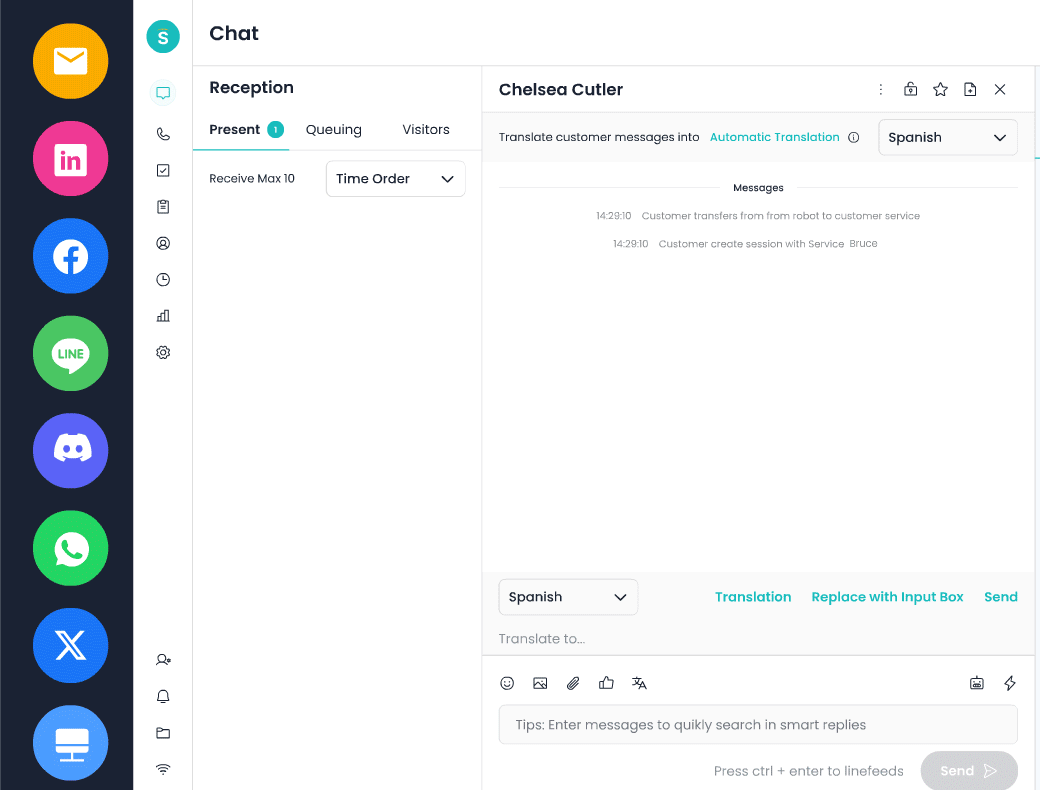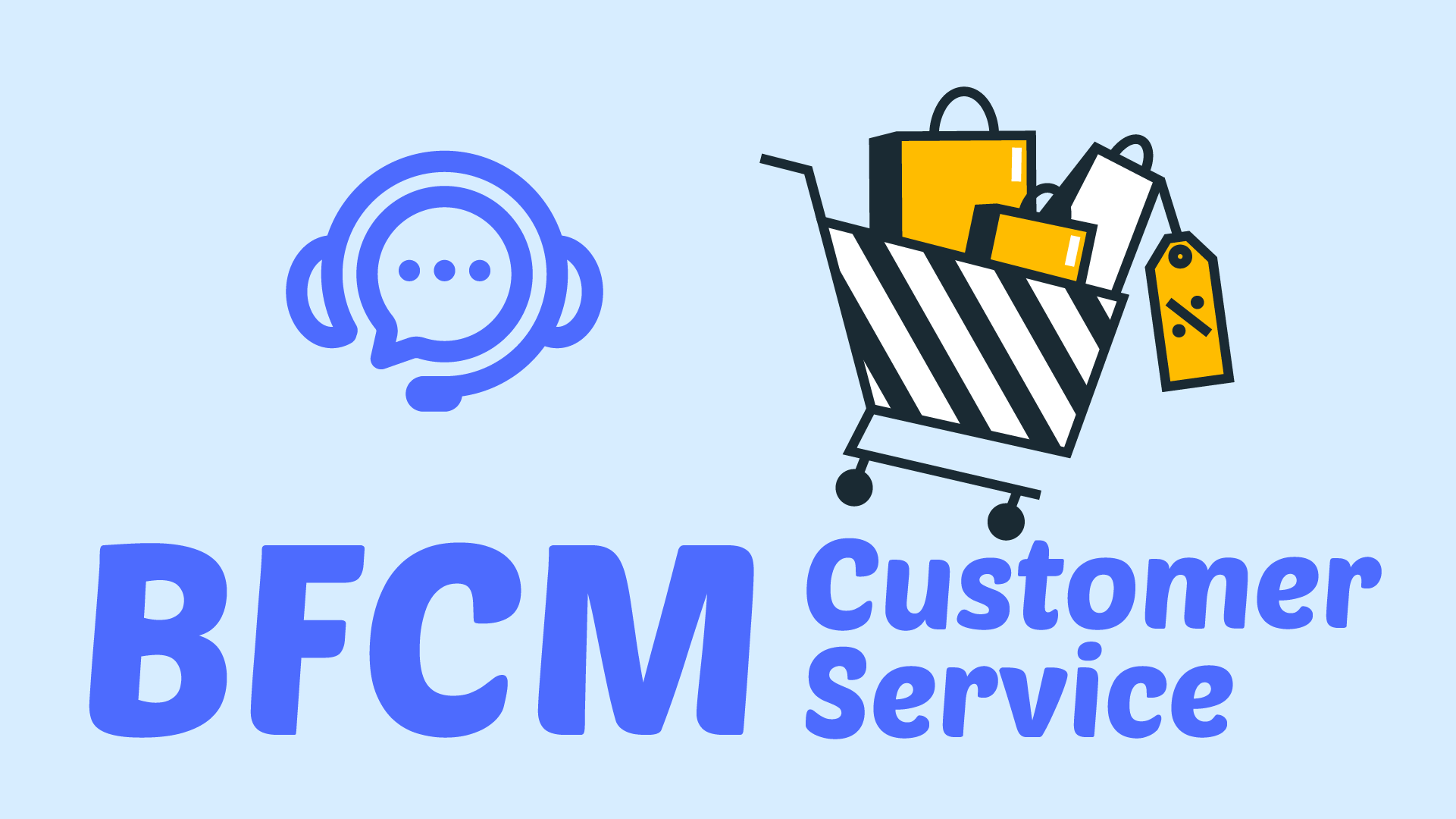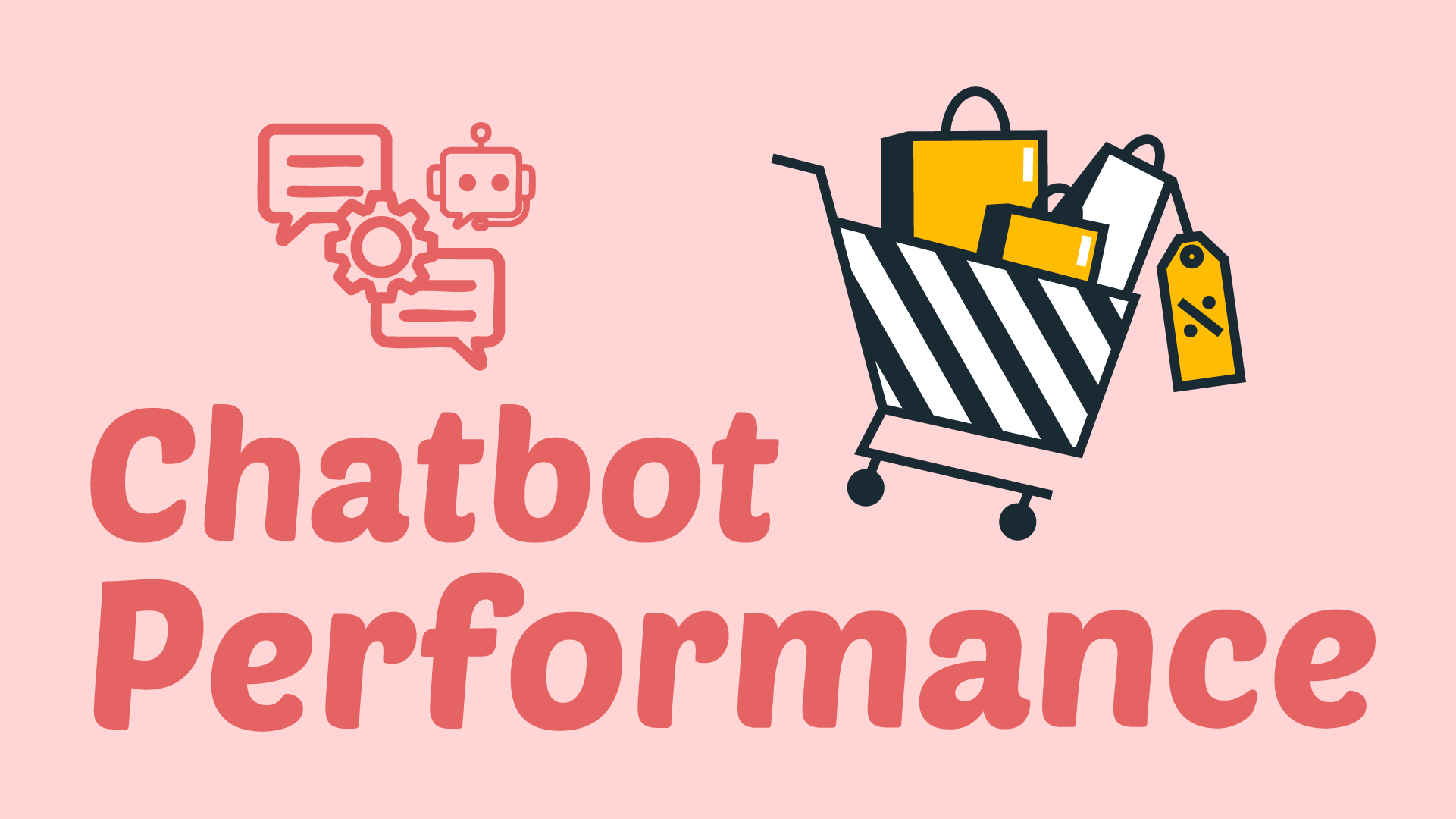Every November, the world’s digital storefronts erupt with activity as Black Friday and Cyber Monday (BFCM) kick off the busiest shopping weekend of the year. What began as a U.S. post-Thanksgiving retail tradition has evolved into a global online shopping phenomenon, driving record-breaking sales across continents.
Here’s what actually happened in 2024: Cyber Monday became the biggest online shopping day ever, with U.S. online spending reaching $13.3 billion. Black Friday also posted record online numbers, about $10.8 billion. Source.

Platform data shows strong merchant-level performance as well: Shopify merchants processed a record $11.5 billion in sales over the BFCM weekend in 2024, a 24% year-over-year increase, evidence of how many independent brands captured significant share during the event. Source.
With these staggering sales volumes and increasing consumer participation, the demand on ecommerce customer service teams intensifies significantly. This article explores how eCommerce brands can deliver exceptional customer service during BFCM 2025 by examining the latest market insights, outlining practical and scalable customer support strategies, and demonstrating how Sobot’s AI-powered solutions empower teams to provide fast, personalized, and efficient assistance throughout the busiest shopping days of the year.
BFCM 2025: Key Trends, Insights & Facts
Black Friday and Cyber Monday have evolved far beyond their U.S. roots, they’re now a global digital phenomenon. As eCommerce continues to mature, these mega-sale days serve as a snapshot of changing shopper behavior, advancing technology, and rising consumer expectations. Let’s look at the most defining trends shaping BFCM 2025, supported by the latest data and insights.

Online Sales Reach Record Highs

Global eCommerce spending during Black Friday 2024 reached approximately US $74.4 billion, marking a 5% increase from 2023. Source.
In the United States, consumers spent US $10.8 billion online on Black Friday 2024, a 10.2% year-on-year rise. Source. These figures confirm what retailers already feel each November: BFCM is no longer a weekend; it’s a global retail season. Many online stores now report earning 25–30% of their yearly digital revenue during this brief window.
Key Takeaway: eCommerce growth is accelerating globally, and customer support systems must scale to match this record-breaking demand.
The Mobile Shopping Revolution
Mobile commerce continues to dominate how people shop during BFCM.
In 2024, 69% of all online purchases worldwide during Black Friday were completed on smartphones or tablets, compared to just 31% on desktop devices. Source.
Nosto’s BFCM 2024 Performance Report shows similar trends, with mobile traffic and conversions surpassing desktop across most categories. Shoppers browse and buy between tasks, during lunch breaks, commutes, or while scrolling social feeds, making the mobile experience a decisive factor in conversion rates.
Key Takeaway: Retailers that optimize checkout, live chat, and help centers for mobile interactions will capture a larger share of impatient, on-the-go consumers in 2025.
What Motivates Shoppers? Discounts Lead the Way
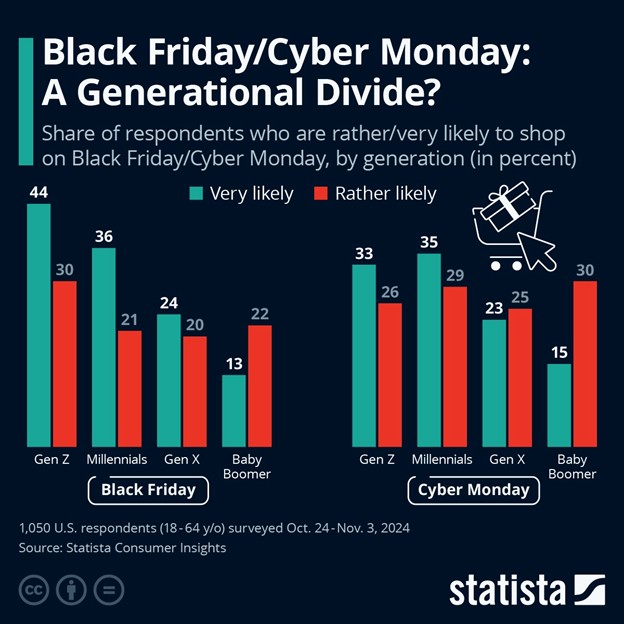
While convenience and brand experience matter, price remains the primary motivator. A YouGov survey in France (2024) found that 63% of shoppers cited discounts as their top reason for participating in BFCM sales. This pattern holds globally , consumers delay major purchases until BFCM to secure the deepest deals on tech, fashion, and home goods.
However, heavy discounting also intensifies competition. Shoppers compare multiple sites simultaneously, and even minor friction, unclear shipping details, slow support, or unanswered questions, can lead to instant abandonment.
Key takeaway: Transparent communication and responsive support are just as vital as the discounts themselves.
Why is Customer Service Pivotal During BFCM?
BFCM is the ultimate stress test for every eCommerce operation. The surge in traffic, the spike in orders, and the rush of inquiries turn an otherwise well-oiled customer journey into organized chaos. For most brands, the difference between a record-breaking weekend and a reputation crisis comes down to one critical factor, customer service performance.

- It Converts High Traffic into Actual Sales: While the number of visitors keeps increasing, conversion rates haven’t grown at the same pace. According to Nosto’s BFCM 2024 Performance Report, traffic to Nosto-powered stores jumped by 14.7% year-over-year, but sales rose only 4.3%. Retail data shows that customer inquiries can increase 5–10× higher than normal during the event. For example, Nosto-powered stores saw a 14.7% increase in traffic but only a 4.3% bump in sales, showing many visitors need support to convert. Source.
- It Meets Customer Expectations for Instant, Accurate Help: During BFCM, shoppers demand real-time answers. Even a short delay in chat or email can cause drop-offs. One in three customers would abandon a brand after a single bad service experience. That’s a huge risk during an event where every second and every sale counts.
- It Protects Brand Reputation When Pressure Peaks: Poor service doesn’t just cost a sale, it damages trust. Slow replies and unclear updates lead to negative reviews, refund spikes, and viral complaints. With social media amplifying bad experiences instantly, responsive customer service is the buffer that protects your brand during peak chaos.
- It Drives Profit and Customer Lifetime Value: Strong service directly contributes to long-term growth. HubSpot reports that a 5% increase in retention can boost profits by 25%–95%, and businesses are 60–70% more likely to sell to existing customers than new ones. During BFCM, every positive support interaction becomes a future revenue opportunity.
- It Turns High-Pressure Moments into Loyalty-Building Experiences: Beyond immediate profit, excellent service during stressful, time-sensitive events like BFCM creates emotional loyalty. When brands resolve issues quickly, communicate clearly, and show empathy during peak chaos, customers remember the experience long after the promotions end. This trust leads to repeat purchases, stronger brand preference, and long-term advocacy, benefits no discount alone can achieve.
How To Prepare Your Customer Service for BFCM?
Getting ready for BFCM isn’t just about stocking inventory or scheduling ads, it’s about making sure your customer service can scale under pressure. Research by Forrester shows that 53% of customers will abandon a purchase if they can’t find a quick answer online, making preparation a critical success factor for the season. Source.
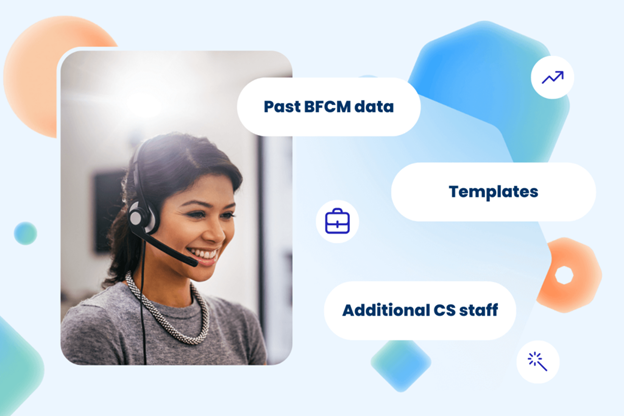
Audit Infrastructure
Start by reviewing every support channel, chat, ticketing systems, voice, and social media. Ask: can your systems handle a 5-10× surge in demand? Do you have fallback capacity and redundancy? Many teams run internal stress tests before the sale weekend to validate capacity. Mixed or legacy systems often become bottlenecks when tickets flood in.
Enhance self-service
Shoppers expect instant answers. Refresh your FAQs to include shipping cut-offs, return deadlines, and promotional conditions. Ensure your chatbot and automated replies address the top 10 repetitive queries, tracking links, discount codes, and order changes. According to a recent analysis, many customers try to resolve issues themselves, about 84% attempted self-service before contacting support. Source.
Train Teams & Workflows
Peak-season stress can overwhelm even experienced agents. Hold short simulation sessions where the team practices handling order surges, stockouts, and payment errors. Map out escalation paths so critical issues reach supervisors fast. Adjust schedules for full coverage across time zones, and empower frontline staff to resolve common problems without approvals.
Adopt Smart Automation
Pure bot or pure human model doesn’t work at scale. A hybrid approach does. Use automation (chatbots, auto-replies, FAQ routing) for high-volume, low-complexity queries. Reserve human agents for the complicated, emotional, or high-value cases. For example, setting up a bot to answer “Where is my order?” frees up human reps to handle complaints, escalations or VIP support. That division keeps queues low and keeps service quality high.
Set Clear KPIs
Define success before BFCM starts. Establish metrics such as average first-response time (FRT), backlog levels, and category-wise ticket volume. Use dashboards that refresh live so you can reallocate staff dynamically during spikes. Industry benchmarks suggest FRT under 4 hours for email and under 2 minutes for live chat leads to higher satisfaction and repeat purchase intent.
How to Deliver Exceptional Service During the BFCM Event?
BFCM isn’t just about preparation, it’s about performance in the moment. Once the traffic surge begins, every second matters. Customers expect quick replies, proactive updates, and consistent experiences across every channel. Here’s how to deliver exceptional, scalable service during the event itself.
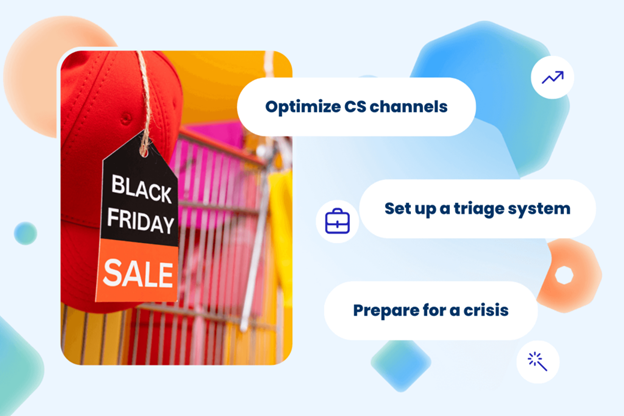
- Monitor and Adapt in Real Time: Customer support during BFCM must be flexible, not fixed. Track inbound queries by channel, live chat, email, social, and adjust staffing or automation coverage on the fly. Quick adjustments prevent backlog build-up when message spikes hit unexpectedly.
- Communicate before customers ask: Proactively send updates about shipping, estimated delivery times, order confirmations, and any unexpected delays. This prevents confusion and lowers customer anxiety during peak shopping moments. Clear, proactive communication also reduces avoidable tickets, since customers don’t need to ask questions you’ve already answered.
- Keep the human tone, even in automation: When bots handle volume, ensure their responses still reflect your brand’s voice and empathy. Because even a correctly answered question can feel cold if the tone is robotic. A well-designed customer-centric support line helps earn brand trust.
- Use Real-Time Trends to Refine Responses Instantly: During BFCM, customer issues don’t appear randomly, they spike in patterns. If you notice many shoppers suddenly asking about “shipping delays”, “promo code not applied”, or “order change requests”, treat these trends as signals. Update your chatbot replies, saved macros, and FAQs immediately so every customer gets accurate, up-to-date guidance without waiting. This rapid refinement reduces repeat tickets and keeps support load manageable. For example, AI-driven services report up to 30% reduction in support-costs when automation is correctly implemented.
- Ensure consistency across all channels: Chat, social media DMs, email and voice support must deliver the same information and tone. Inconsistent messaging frustrates customers and undermines trust. A unified support front keeps the experience seamless.
- Deploy self-service and AI for repeat questions: Use AI chatbots and an up-to-date knowledge base to handle common queries like order tracking, returns, product information, and promo code help. According to industry research, 91% of customers say they would use a knowledge base if it met their needs, showing how powerful self-service can be for reducing repetitive tickets.
How Sobot Enables Scalable, High-Quality Customer Service for BFCM?
When order volumes surge and customer expectations peak, businesses need support systems that can scale without sacrificing speed or quality. That’s exactly where Sobot helps. Designed for high-demand retail periods like BFCM, Sobot combines AI, automation, and omnichannel integration to help brands deliver seamless customer experiences, even under pressure.
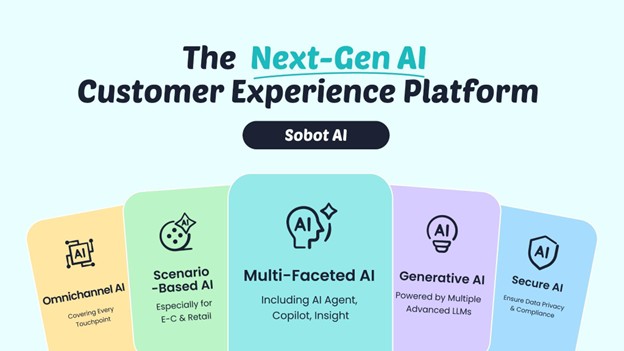
Unified Omnichannel Support
During BFCM, customers reach out from every direction, live chat, email, WhatsApp, Facebook Messenger, Instagram DMs, and e-commerce chat widgets. Managing all those channels manually can fragment response quality.
Sobot integrates every customer touchpoint into one AI-powered workspace, ensuring teams never miss a message. With a single view of all active chats and emails, agents respond faster and more consistently, regardless of platform.
AI & Automation for Peak-Time Efficiency
Sobot’s AI doesn’t just power online chat, it also supports voice and call automation, helping teams manage high inquiry volumes across every channel. The platform can automate routine tasks like order tracking, return requests, product questions, and promo code issues, giving customers instant answers whether they contact you via chat or phone. This hybrid model allows human agents to focus on complex or emotional cases that require empathy, while AI handles the repetitive workload.
Real-Time Analytics & Dashboards
BFCM performance changes minute to minute. Sobot provides live analytics and dashboards with hundreds of metrics, including first-response time (FRT), backlog size, agent load, and service levels. This transparency helps managers make real-time staffing decisions and track evolving query trends.
Plug-and-Play E-Commerce Integrations
Speed of setup is everything when the clock’s ticking toward the holiday season. Sobot integrates with Shopify, Amazon, Shopee, Lazada, and other major e-commerce platforms. That means no scrambling between systems, inventory, order details, and customer chats all sync automatically. Brands can be fully operational for BFCM within days instead of weeks.
Scalable, Cost-Efficient Growth
Traditional support scales linearly: more tickets mean more agents. Sobot breaks that pattern. With automation and centralized control, one platform can handle exponential ticket growth without proportional staffing increases.AI chatbots can resolve a large portion of routine questions at a fraction of the cost: an industry summary (citing IBM) reports chatbots can handle up to 80% of routine inquiries, and implementing AI-driven self-service can cut customer support costs by around 30%.Source. The result? Lower operational costs, faster service, and happier customers, exactly what every retailer needs during BFCM.
Wrap Up
Black Friday and Cyber Monday have evolved far beyond flash sales and discount codes. They’ve become a global stress test for eCommerce operations, where infrastructure, communication, and customer service decide who wins.
As we’ve seen, online sales continue to rise, mobile shopping dominates, and shoppers expect instant, empathetic support at every touchpoint. In short, brands that invest in strong, scalable service don’t just survive BFCM, they build long-term loyalty. Every resolved query, every proactive update, and every empathic message becomes a lasting impression that drives repeat business long after the flash sales fade.
With the right tools and strategy, such as Sobot’s AI-powered, omnichannel platform, you can meet customers wherever they are, respond instantly, and scale seamlessly during the surge. Sobot helps teams blend automation with empathy, ensuring that even at peak volume, your brand delivers not just deals but truly delightful service.
